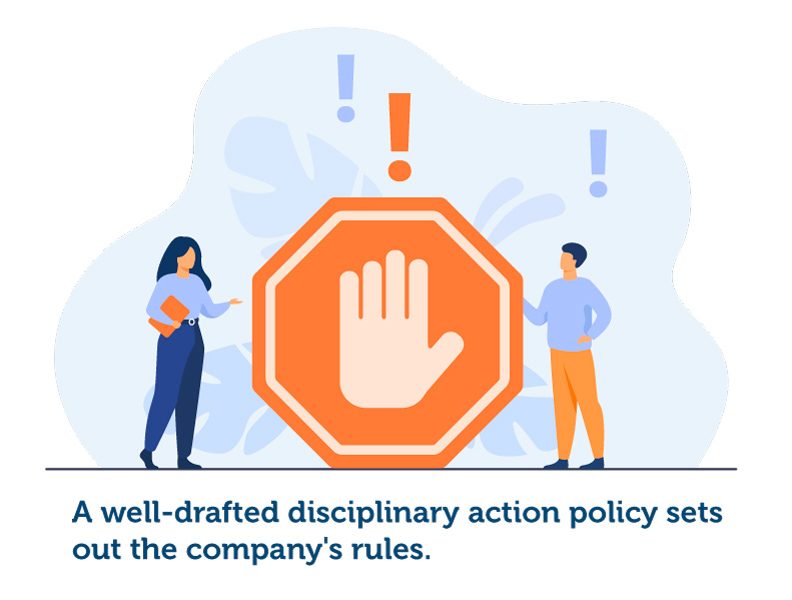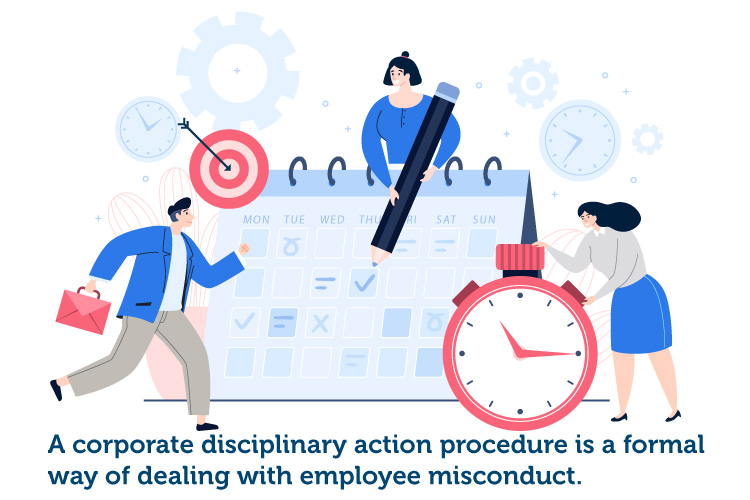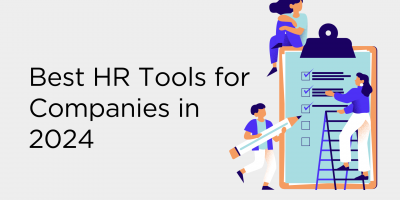
How to Design an Effective Employee Incentive Plan
Are traditional financial rewards enough to motivate your team, or could the secret to unlocking peak performance lie in understanding the deeper, social value of non-cash incentives?

Just like any other social setting, the workplace requires particular conduct. Failure to act accordingly might result in an employer starting a disciplinary action against an employee.
As uncomfortable as it may be for the manager and the worker to give and receive a reprimand, it is essential to have a disciplinary procedure in place because it helps maintain a healthy working environment.
Additionally, it increases employee engagement by prompting the workforce to follow the organizational rules, improve their behavior and performance, and work towards the company’s goals.
However, to ensure maximum compliance to desired conduct and minimize the need for disciplinary actions, employees must understand what disciplinary action is, which forms of actions their company can set out, and what behavior may warrant one.

By definition, disciplinary action in a workplace is a procedure that lets an organization deal with employee misconduct, poor performance, irregular attendance, or rule violation.
Depending on the severity of the issue, the company might try to resolve the matter informally by having an unofficial conversation with the employee to make them aware of the problem, or they might immediately turn to disciplinary procedures.
Its purpose is to guarantee employees’ safety and minimize workplace disruptions. It aims to inform the worker of the issue, offer them opportunities for improvement, and explain the consequences if a correction does not occur.
Companies should outline all rules in a company handbook to ensure that all employees are conscious of what is acceptable and unacceptable in the workplace and what could result in a disciplinary procedure.
The handbook should also include the types of intolerable behavior and what disciplinary action the employee will endure in case of misconduct.
Many behaviors can merit disciplinary actions, and deciding upon them largely depends on the employer and the type of business. Therefore, the company must outline all improper misconduct in an employee handbook to ascertain complete transparency.
Behavior that might warrant disciplinary action can include:
Depending on the behavior, the employer can use different disciplinary actions to resolve the wrongdoing.
Employers can take various disciplinary actions depending on the organization and the gravity of the misconduct. However, the three most common disciplinary action examples are progressive discipline, performance improvement plan, and reassignment or suspension.
Progressive discipline
Progressive discipline is the most common and traditional disciplinary action. With this method, the disciplinary actions become harsher if the employee doesn’t show progress in correcting the issue. There are five sequential steps to this process:
Progressive discipline is an excellent tool in case of mild misconduct. However, if the transgression is much more severe, the organization should take more rigorous disciplinary actions.
A performance improvement plan is a rehabilitative approach that allows employees the chance to correct their behavior and stay in the company.
Establishing the plan should follow the performance management process to help the employer set clear goals and objectives, giving employees a clear framework for improvement expectations.
During the process, the worker has regular meetings with the supervisor and HR, who follow their progress towards the goals and objectives.
Additionally, PIP should include a plan about what happens if the employee does not meet the outlined expectations. This form of discipline might also result in termination.
Reassignment or suspension
When employees can no longer stay in their position due to behavioral issues or conflict, they can be reassigned when termination is not the best approach.
Reassignment requires meticulous workforce planning about the new position the worker will take, and in some instances, it might also necessitate reskilling or upskilling.
Suspension as a form of discipline is a more punitive approach used in the case of a graver issue. It obliges workers to repair their behavior and meet certain conditions to get reinstated.

A discipline action policy defines and standardizes response procedures in case of an incident contrary to company policy. A well-drafted policy sets out the company’s rules and the consequences of not following them.
Every company can develop its own policy, but it should include the following six elements:
It is up to the company’s legal department to draw up a disciplinary policy, but there are some online examples and templates that can serve as guidelines.

A corporate disciplinary action procedure is the process of dealing with employee misconduct. A disciplinary action might seem very time-consuming, but it is vital to follow the correct steps to protect the business from legal reprimand.
A well-developed and clear procedure can also make the situation more formal and peaceful since it is usually a time when emotions are running high.
Each company develops its own disciplinary action procedure, but to ensure a smooth process protected from any legal claims, it should include these six steps:
Misconduct puts the organization at risk and endangers the safety of employees and customers. That is why it is vital to have disciplinary action in place to deal with each inappropriate behavior professionally and legally.
Browse our curated list of vendors to find the best solution for your needs.
Subscribe to our newsletter for the latest trends, expert tips, and workplace insights!

Are traditional financial rewards enough to motivate your team, or could the secret to unlocking peak performance lie in understanding the deeper, social value of non-cash incentives?

Is HR the cornerstone for employee well-being? Uncover its role in transforming workplaces into thriving communities.

Struggling to navigate the maze of HR tools available in 2025? Our review highlights leading solutions for transforming employee management.

In a world that’s constantly changing, the question isn’t whether you can afford to plan a career—it’s whether you can afford not to.
Used by most of the top employee benefits consultants in the US, Shortlister is where you can find, research and select HR and benefits vendors for your clients.
Shortlister helps you reach your ideal prospects. Claim your free account to control your message and receive employer, consultant and health plan leads.